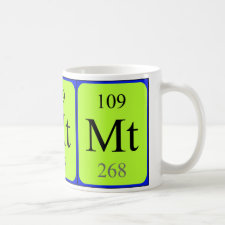
Authors: Zhao N, Hu XL, Guan P, Song RY, Tian T, Zhang XR
Article Title: Preparation of Erythromycin Imprinted Polymeric Microspheres by Emulsion Polymerization and Their Adsorption Properties.
Publication date: 2014
Journal: Acta Physico-Chimica Sinica
Volume: 30
Issue: (1)
Page numbers: 121-128.
DOI: 10.3866/PKU.WHXB201311272
Alternative URL: http://www.whxb.pku.edu.cn/EN/abstract/abstract28636.shtml
Abstract: Uniformly, molecularly imprinted polymeric microspheres (EM-MIPMs) were prepared by emulsion polymerization using erythromycin as template molecule, methacrylic acid (MAA) as functional monomer, ethylene glycol dimethacrylate (EDMA) and sodium dodecylbenzenesulfonate (SBS) as cross-linker respectively and emulsifier respectively. Characterization of the obtained erythromycin-MAA complexes was achieved by ultraviolet (UV) absorption spectroscopy, fourier transform infrared (FT-IR) spectroscopy and nuclear magnetic resonance (1H NMR) spectroscopy. The results showed that erythromycin-MAA complexes were obtained by cooperative hydrogen bonding interaction. Surface features and thermal stability of EM-MIPMs were investigated by scanning electron microscope (SEM) and thermal gravimetric analyzer (TGA). The EM-MIPMs were uniformly microspheres and the average diameter of EM-MIPMs was 4.24 μm were larger than those of the non-imprinted polymeric microspheres, and it exhibited outstanding thermal stability. Kinetic, equilibrium adsorption and selectivity adsorption experiments (solid-phase extraction) were adopted to study the binding properties and molecule recognition character of EM-MIPMs for erythromycin. Kinetic experimental data were well-described by the pseudo-second-order kinetic model. The binding of erythromycin was analyzed by Langmuir and Freundlich isotherm models. The EM-MIPMs suggested outstanding affinity toward erythromycin, equilibrium experimental data of EM-MIPMs fitted the Langmuir isotherm well, the binding amounts reached to 0.242 mmol g-1. Meanwhile, solid-phase extraction experiments demonstrated that EM-MIPMs displayed high affinity to target molecules over competitive RM and EEs (roxithromycin and erythromycin ethylsuccinate).
Template and target information: erythromycin
Author keywords: Erythromycin, molecularly imprinted, microsphere, adsorption, binding property, recognition property



Join the Society for Molecular Imprinting

New items RSS feed
Sign-up for e-mail updates:
Choose between receiving an occasional newsletter or more frequent e-mail alerts.
Click here to go to the sign-up page.
Is your name elemental or peptidic? Enter your name and find out by clicking either of the buttons below!
Other products you may like:
 MIPdatabase
MIPdatabase









